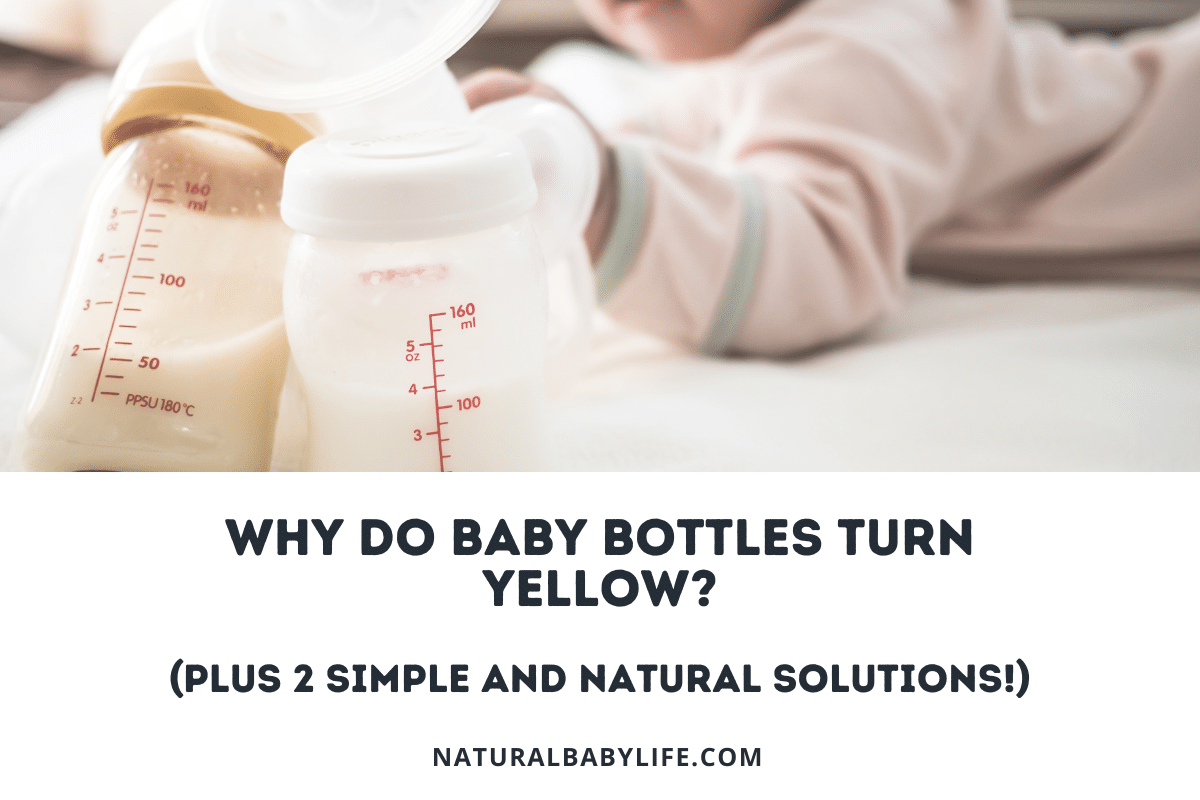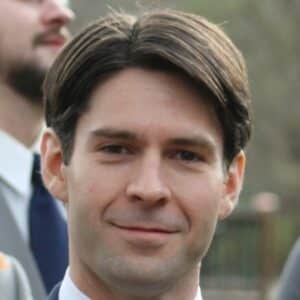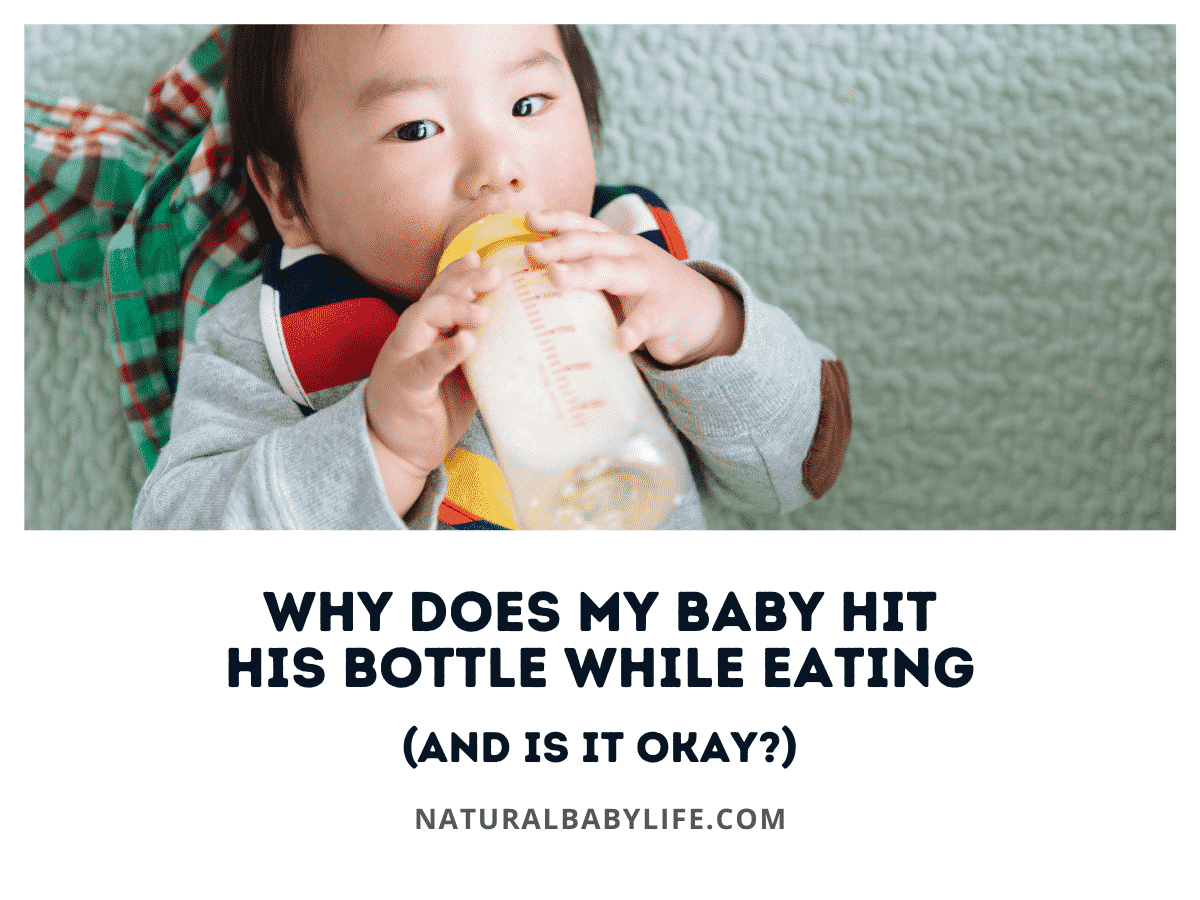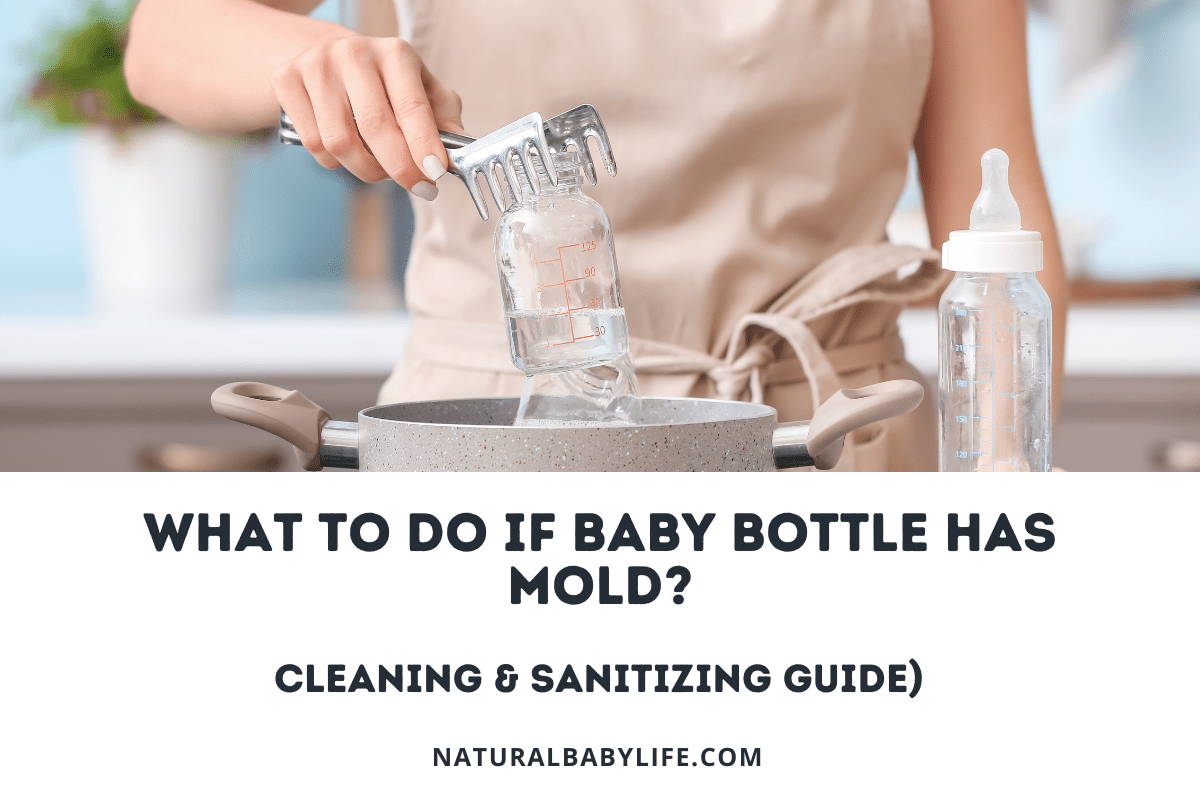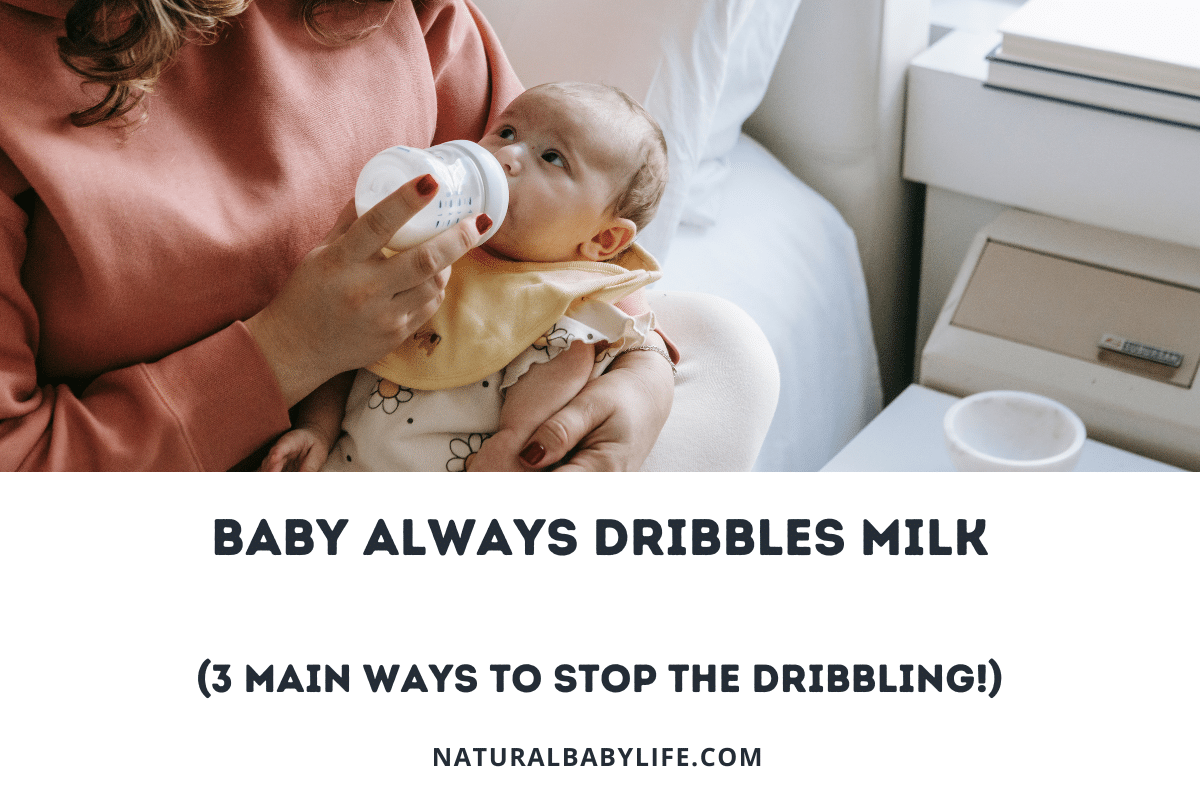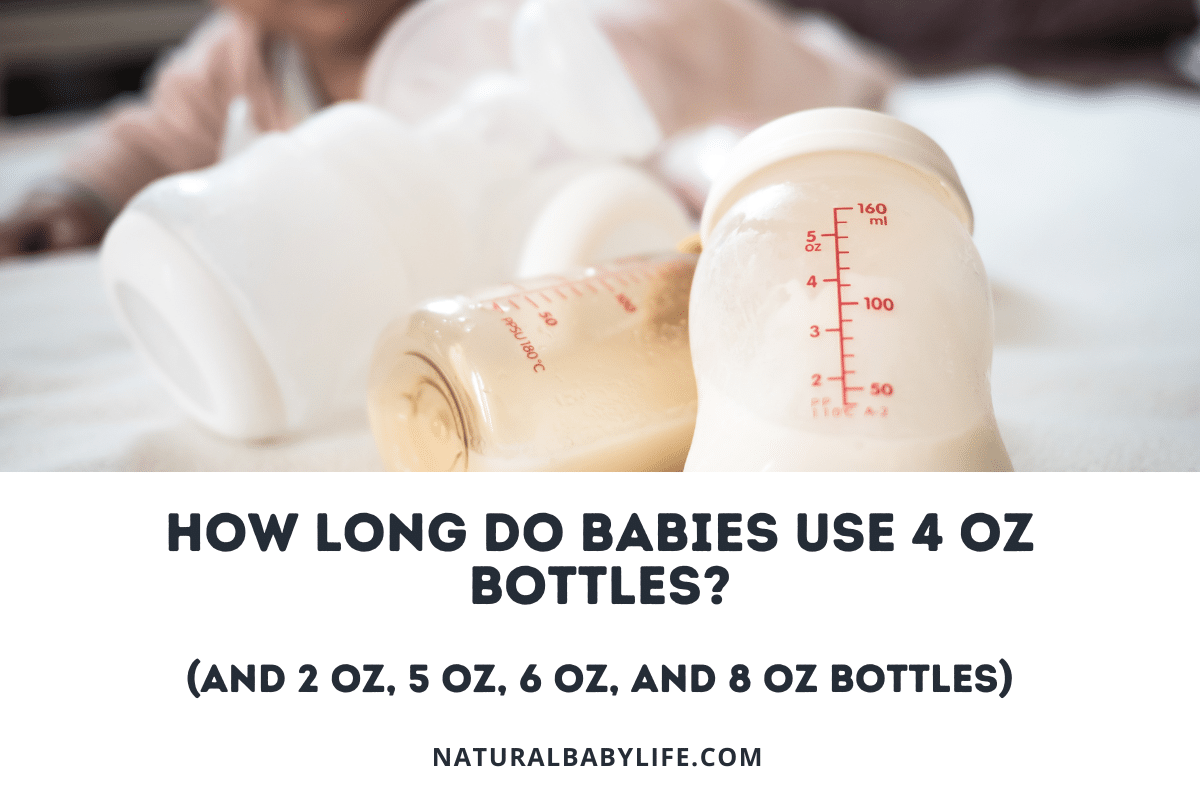If you are the parent of a little one who uses bottles, you likely know the struggle of attempting to keep baby bottles looking clear and clean. You may have wondered why do baby bottles turn yellow? No matter how much you soak the bottles or scrub them, the cloudiness and discoloration just seems to linger and worsen over time.
Plastic and silicone baby bottles face discoloration over time as a natural result of use and exposure to the fat in formula or breast milk. Similarly, dishwasher sterilization and exposure to fruit juices may leave your little one’s bottles with more severe stains. Special cleaning can help remove the yellow color and restore them to like-new condition.
If you’re wondering about some of the most common causes of discoloration and how to clean your baby’s bottles to prevent discoloration, we’ll cover these topics and more. Keep reading to find out more about why baby bottles turn yellow and how to keep your bottles clean.

Table of Contents
Why do baby bottles turn yellow or go cloudy?
Plastics, like most materials, will become worn or stressed over time and there are quite a few different reasons why your baby’s bottles may become cloudy or yellow.
Breast milk and formula both contain varying levels of fat. Even after being rinsed with water or washed (but not scrubbed) bottles with leftover milk or formula residue inside of them will become greasy and slightly cloudy. If you’ve ever rubbed your finger along the inside of a bottle, you may have noticed the greasy substance that is left on your finger. This is because fat is a compound that easily sticks to other surfaces and can get stuck in any cracks or material imperfections.
Bottles may appear smooth, however, they are covered in imperfections that will trap the fat and cause the plastic to become cloudy after prolonged buildup.
Similarly, many of us use bottle brushes that are abrasive when we are cleaning baby bottles. Over time, these brushes can damage the integrity of the plastic and cause visible damage that can change the appearance and lead to cloudiness.
Another possible cause that I found as I searched through some parenting forums is cleaning baby bottles in the dishwasher. While the dishwasher is a great option for sterilizing bottles, if you’re putting the bottles and nipples in with other items that have had contact with food, the food remnants may cause discoloration. Similar to how tomato sauce can ruin Tupperware, washing bottles in the dishwasher with these foods can cause the same discoloration, which is why your bottles may be turning slightly yellow or orange after being washed.
Some other possible causes include: juice being put inside bottles, dish soaps with color additives, general dishwasher use, hard water, or calcium build-ups.
How do you clean baby bottles without making them cloudy?
If you feel best about using a bottle brush but want to cut down on the damage you may be causing, Boon makes a silicone bottle brush that won’t scratch your little one’s bottles and can help you avoid this cause of discoloration. You can check it out here (and read the reviews as well!).
| Image | Title | Price | Prime | Buy |
|---|---|---|---|---|
Top | Dr. Brown's Soft Touch Bottle Brush, Blue | PrimeEligible | Buy Now | |
 | Silicone Bottle Brush Cleaner - Long Handle Baby Bottle Cleaner Nipple Brush Ideal for Glass & Plastic Water Bottles (Set of 2pcs Green/Purple) | PrimeEligible | Buy Now |
Product prices and availability are accurate as of the date/time indicated and are subject to change. Any price and availability information displayed on [relevant Amazon Site(s), as applicable] at the time of purchase will apply to the purchase of this product.
Prices pulled from the Amazon Product Advertising API on:While some of us may believe the hotter, the better when it comes to the water we use for cleaning bottles, this habit may actually be damaging the bottles we give our babies.
Plastics, like all materials, will have a change in structure when warmed up or cooled down and these changes in structure can make the materials more likely to change in appearance or weaken the strength of the material altogether (think about when plastic water bottles crack in the freezer).
Similarly, if we use harsh dish soaps containing dangerous chemicals, we may begin breaking down the structure of the baby bottles, which can lead to cracks and eventual discoloration.
Is it safe to use baby bottles that have turned yellow?
While we may be inclined to throw away our baby’s bottles if when they become cloudy or discolored, you don’t have to throw bottles away for this reason. When washing the bottles properly, you may be able to remove any stains, discoloration, or odors that are lingering following prolonged use.
However, if your little one’s bottles are cracked, chipped, or no longer maintain their physical integrity, this can cause a safety risk to your baby and these bottles should be thrown away.
I just looked at why baby bottles leak in a recent article. Sometimes your bottles will start to leak when it is time to replace all or part of the bottle!
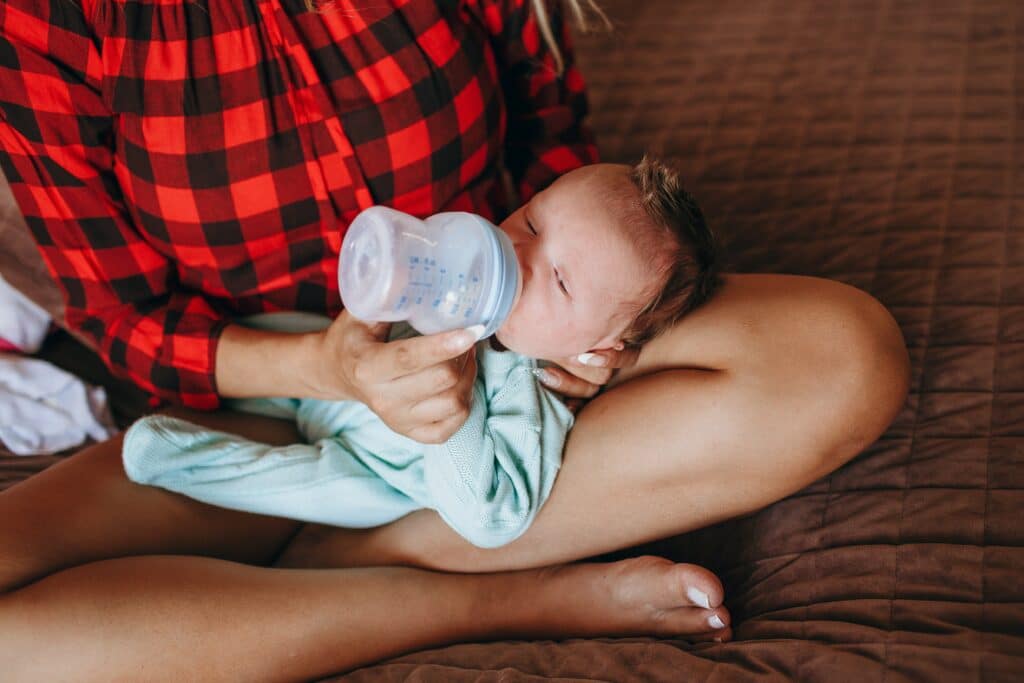
How do you get the yellow out of baby bottles?
If you notice yellow or deeper colored stains on your baby’s bottles there is likely a simple explanation. Fruit juices are known to discolor bottles more often than breast milk or formula. If your baby isn’t drinking any juice but their bottle is still appearing yellow–consider how you’ve cleaned or sterilized the bottle.
Did you place the bottle in the dishwasher?
If so, this is likely the cause of the discoloration and some simple hand washing or soaking in either baking soda or vinegar solutions should solve this problem.
I should point out that not every baby bottle is created equally and I’ve found that one brand, in particular, has performed better for me over the past couple of years – Comotomo. In fact, this is the baby bottle brand that I recommend the most because they are less prone to discoloration, durable, clean easily, and have a unique shape that makes it easier for babies to learn to hold by themselves. Check out the cool design here!
Do I have to wash bottles after every use?
It’s recommended that you wash baby bottles after every use to remove all milk or formula from the bottle. Most websites recommend using hot soapy water, however, there are more natural alternatives to dish soap that we will explore below.
Cleaning baby bottles after every use (regardless of what was in the bottle) will not only help keep our little ones healthy and safe from exposure to bacteria, it will also help keep the bottles from becoming discolored.
Let’s take a look at some of the ways to keep your bottles clean and remove any yellow color or stain from the bottles.
Soaking baby bottles in vinegar
As parents who try to use natural products for your family, you’re likely familiar with using vinegar as a cleaning agent. Thankfully, it can be used for cleaning baby bottles and is actually highly recommended for treating discoloration in bottles.
To clean using vinegar, combine one part white vinegar to one part water to create a 50-50 mixture. As noted on ChemistDirect, be sure to thoroughly rinse the bottles after cleaning since vinegar can curdle formula and milk if it is not fully removed from the bottle.
This approach seems to have the best luck for cloudiness and slight discoloration. However, vinegar may not be strong enough to remove harsh stains in bottles.
How to clean baby bottles with baking soda
If your baby’s bottle is discolored with harsh stains (most often caused by fruit juices-which should never be given to our little ones via a bottle) or contains a strong, lingering odor then baking soda may be your best option. Recommended on many websites and even by varying bottle companies, baking soda has proven to be effective for removing hard stains and foul odors.
To clean with baking soda, simply add one teaspoon of baking soda to a bottle filled with warm water. Let the bottle sit overnight and then wash and scrub the bottle in the morning.
Is it okay to wash baby bottles with dish soap?
While not a natural approach to cleaning baby bottles, mild dish soap can be used to clean dirty baby bottles. If you choose to use soap to wash the bottles for your little one, be sure to avoid soap with sodium lauryl sulfate or sodium laureth sulfate.
Both of these chemicals are classified as likely carcinogens and can cause health problems with prolonged exposure. Similarly, fragrances, dyes, and varying other chemicals and additives should be avoided due to the potentially harmful and toxic nature of these substances.
If you are hoping to use dish soap, some of the best natural options for cleaning your little one’s bottles include DAPPLE, Elysium, and Puracy. Each of these premium products includes non-toxic ingredients that are derived from plants and they last a surprisingly long time.
| Image | Title | Price | Prime | Buy |
|---|---|---|---|---|
 Top
Top
Top
Top | DAPPLE Baby Bottle and Dish Soap - Fragrance Free Dish Liquid, Plant Based, Hypoallergenic, 1 Pump Included, 16.9 Fluid Ounces (Pack of 3) | PrimeEligible | Buy Now | |
 Top
Top
Top
Top | Babyganics Foaming Dish & Bottle Soap, Pump Bottle, Fragrance Free, 16oz, 3 Pack | PrimeEligible | Buy Now | |
 Top
Top
Top
Top | Puracy Natural Dish Soap, Green Tea & Lime, Sulfate-Free, Natural Liquid Detergent, 16 Fl Oz (3-Pack) | PrimeEligible | Buy Now |
Product prices and availability are accurate as of the date/time indicated and are subject to change. Any price and availability information displayed on [relevant Amazon Site(s), as applicable] at the time of purchase will apply to the purchase of this product.
Prices pulled from the Amazon Product Advertising API on:Can you bleach baby bottles?
While the CDC notes that you can use bleach to sanitize baby bottles, they do list it as their last resort (it is technically a safe option, however not a natural option for those of us seeking natural cleaning solutions for our kids).
They recommend using 2 teaspoons per 1 gallon of water. They note that you should let the bottles air dry after sanitizing them so that the bleach breaks down. This is recommended only if you cannot boil, steam or put your baby bottles in the dishwasher to sanitize them.
Some brands of bottles may have recommendations for their specific products on their website that may help preserve the bottles you purchased. This means your little one’s bottles will no longer just be safe for use but will continue to look clean and new for an extended period of time.
Let’s take a look at some of those brands now.
Dr. Brown bottles turning yellow?
Dr. Brown’s bottles are one of the most commonly used plastic bottles that many parents choose to use. Their bottles are made from Polypropylene.
When visiting their web page, you can find questions about the bottles becoming discolored and recommendations for cleaning the bottles. They note that if the bottles are becoming cloudy or discolored, you should wash them in a 50-50 mixture of white vinegar and water.
Once they’ve been washed, any discoloration and lingering odors should be gone.
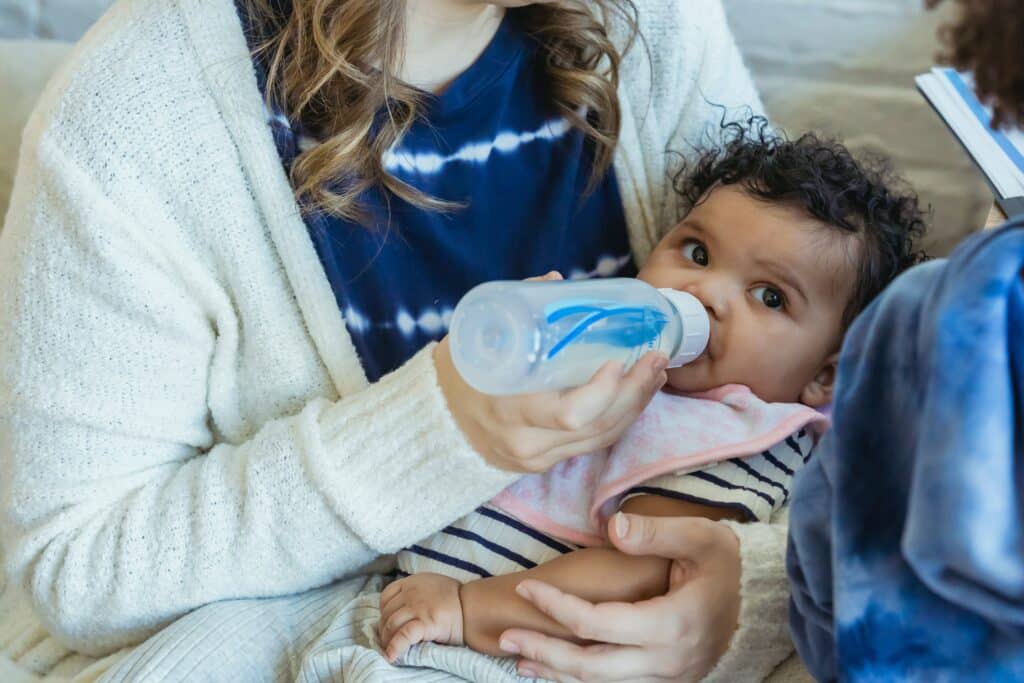
Comotomo bottles turned yellow?
Unlike most bottles, Comotomo bottles are made of silicone instead of hard plastic.
Unfortunately, like hard plastic bottles, even Comotomo products are at risk for discoloration.
Comotomo acknowledges this on their website to help out the parents who may be using their products. They note that discoloration is natural and will happen over time and with heavy use. However, they recommend weekly sterilization via boiling water to prevent discoloration and to preserve the bottles.
Spectra bottle turning yellow?
Spectra is one of the few brands that does not usually sell their bottles apart from their pump systems. While the bottles may be found on amazon, Spectra does not sell these in stores or with varying stages of nipples since they’re mainly used with the pumping system.
Their website doesn’t list the materials used to create their bottles, however, they do specifically note that microwaving their bottles and pump supplies will cause cloudiness due to a cosmetic issue. They note that this issue is not harmful and that the bottles can continue to be used.
Avent bottles have a yellow tint?
Those of us who have used Avent bottles or seen them in the store, know that this is one of the few companies that makes easily available natural glass bottles in addition to their plastic options. The glass bottles should not become discolored and are a great natural parenting option.
However, if you have been using the plastic bottles and are having trouble with yellow tints and discoloration, it’s likely a result of the plastics they use (either polypropylene or polyamide) and their exposure to wear and tear.
They note that one of their bottles has a naturally milky hue which is likely causing some parents to be confused as to whether the bottles are clean or becoming discolored. Or as they note on their website, the discoloration may come as a result of being washed in the dishwasher.
They do not have recommendations for resolving this issue, however, it can likely be addressed by either the vinegar or baking soda-based washing techniques we discussed earlier.
Frequently Asked Questions (FAQs)
How do you get rid of discolored baby bottles?
There are several possible causes of discoloring in baby bottles, but most of the time it’s an easy fix. For a natural option, you can use to use vinegar or baking soda to clean the inside of the bottle and remove the stains.
How do I keep my baby’s bottles white?
The reality is, most bottles will become discolored or cloudy at some point after extensive use. If your bottles don’t need to be replaced yet, you can likely keep them white or clear by cleaning them well and sanitizing them after each use.
Why do baby bottles get discolored?
Baby bottles usually get discolored from the fat in breastmilk or formula or from being washed in the dishwasher with other food or juice residue. The simplest fix for this is to wash the bottles by hand with either vinegar or baking soda.
Can yellowed plastic be made clear again?
While most bottles will eventually become discolored over time, if the bottles are just stained from milk or juice, you can typically remove the yellow tint by washing them well and sanitizing them.
Why do bottle nipples turn yellow?
Bottle nipples can turn yellow either from heavy use or after being washed in the dishwasher. If the nipple is stained, you can usually wash it with a natural cleaning solution to remove the stains like the rest of the bottle. If the nipple is damaged or worn out in any way, it’s time to replace it.
Conclusion
If your baby is bottle-fed at least part of the time, you’ve likely noticed some discoloring or a yellow tint on your baby’s bottles. Although you may be tempted to get rid of bottles that have turned yellow, it’s often a simple fix and you don’t have to purchase a whole new set of bottles.
The simplest way to get rid of any stains or discoloring is to wash your baby’s bottles by hand. If you’re wondering why do baby bottles turn yellow, there are numerous reasons but baking soda or vinegar usually removes the stains.

